World Expo Wares at WMODA
The Wiener Museum of Decorative Arts is very privileged to have an extensive collection of exhibition vases on display in the Royal Doulton Gallery. Most notable are the exhibits made for the World’s Columbian Exposition held in Chicago in 1893 to mark the 400th anniversary of the arrival of Christopher Columbus in the New World.
Sir Henry Doulton believed profoundly in the importance of international exhibitions to promote the work of the Lambeth and Burslem studios and he encouraged his artists, “Be first or not at all for to be second is to be nowhere.” They certainly marked his words as the Doulton Potteries won seven of the highest awards at Chicago, the largest number to any firm of potters in the world.
Doulton’s new Burslem Studio made its debut on the world stage at Chicago. Art Director John Slater worked with the Burslem artists over a period of eighteen months to produce spectacular exhibition pieces using their newly developed ivory Parian type porcelain body, known as Vellum. The sculptor Charles J. Noke introduced this new style from the Royal Worcester factory, where he had worked for several years.
Noke modeled several monumental Vellum vases in Renaissance style for Chicago. The place of honor was given to his Columbus vase, which stood nearly 6 feet tall and was surmounted by a figure of the great navigator “looking out with glad surprise on the new continent.” WMODA has an imposing free-standing Vellum figure of Columbus, which was later adapted to make lamps.
In the center of the Royal Doulton gallery at WMODA is one of Noke’s massive Diana vases, which was conceived for the Chicago exhibition. Four Diana vases were shown at Chicago, each painted by one of the leading artists from the Burslem Studio, and it was so successful that the form was reprised for the Paris exhibition in 1900, which is the version on display at WMODA.
Noke also presented four versions of his spectacular Dante vase at Chicago and the one at WMODA was painted by Charles Labarre, a renowned French artist. Labarre specialized in cupids and classical figures in Sèvres style and was brought from Paris by John Slater to work on some of the large vases for the Chicago exhibition.
Labarre also painted Noke’s Love vase for Chicago, which is on display at WMODA. The vase stands over two feet tall and is crowned by a figure of Cupid “casting his net and ensnaring the blinded inhabitants of a globe.” At the foot mischievous cupids enchain lovesick swains and the stem supports a shell of iridescent pearl painted with cupids cavorting.
The Burslem showstoppers were often enhanced with raised and acid gold ornament. Delicate traceries of gold were used to outline floral motifs on an ivory Vellum body in a new technique known as “Spanish” decoration, which was developed by John Slater. Many fine examples were executed for Chicago by leading artists, such as David Dewsberry and Samuel Wilson.
Another leading artist to hit the headlines at Chicago was George White who is renowned for his paintings of ethereal classical maidens in diaphanous robes. For Chicago White was entrusted with the decoration of the monumental Dante and Diana vases, as well as a monumental flow blue vase with classical figures symbolizing the arrival of spring.
In addition to ornamental vases, a novel set of table decorations for fruit and flowers was modeled by Noke after illustrations by Walter Crane from Flora’s Feast ‘A Masque of Flowers’. Published in 1889, this influential book features flowers personified in a festive parade through the seasons. Noke fashioned Crane’s wild rose designs into a collection of eleven figurative pieces which varied in size from a small olive dish to an imposing centerpiece for an electric light.
Doulton’s first free-standing figures also made their debut at the Chicago exhibition and one of the Chicago publicity photos shows the double-sided jester entitled Mirth and Melancholy dwarfed by the Diana vase. These Vellum figures were made in an ivory Parian porcelain body and tinted in pink and green ‘smear’ glazes, often with raised gold decoration.
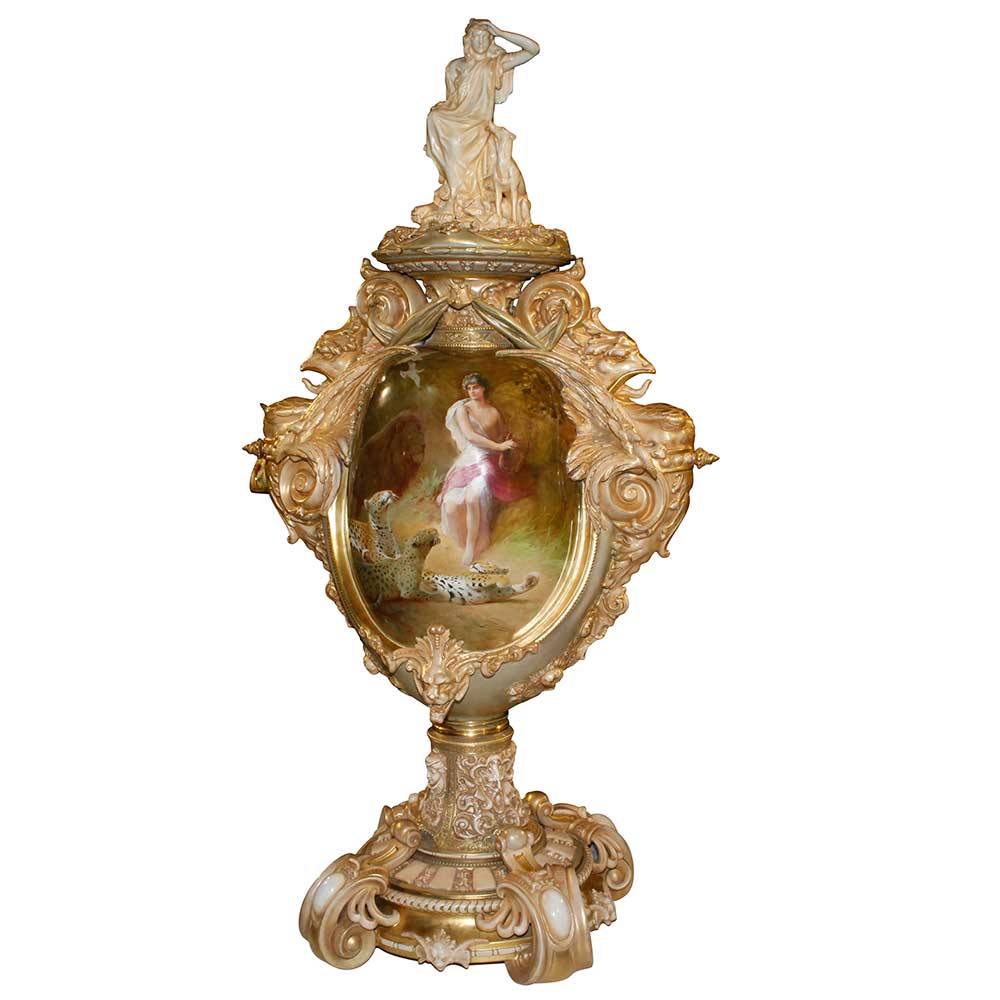
Diana Vase
by C.J. Noke, F. Hancock & G. White 1900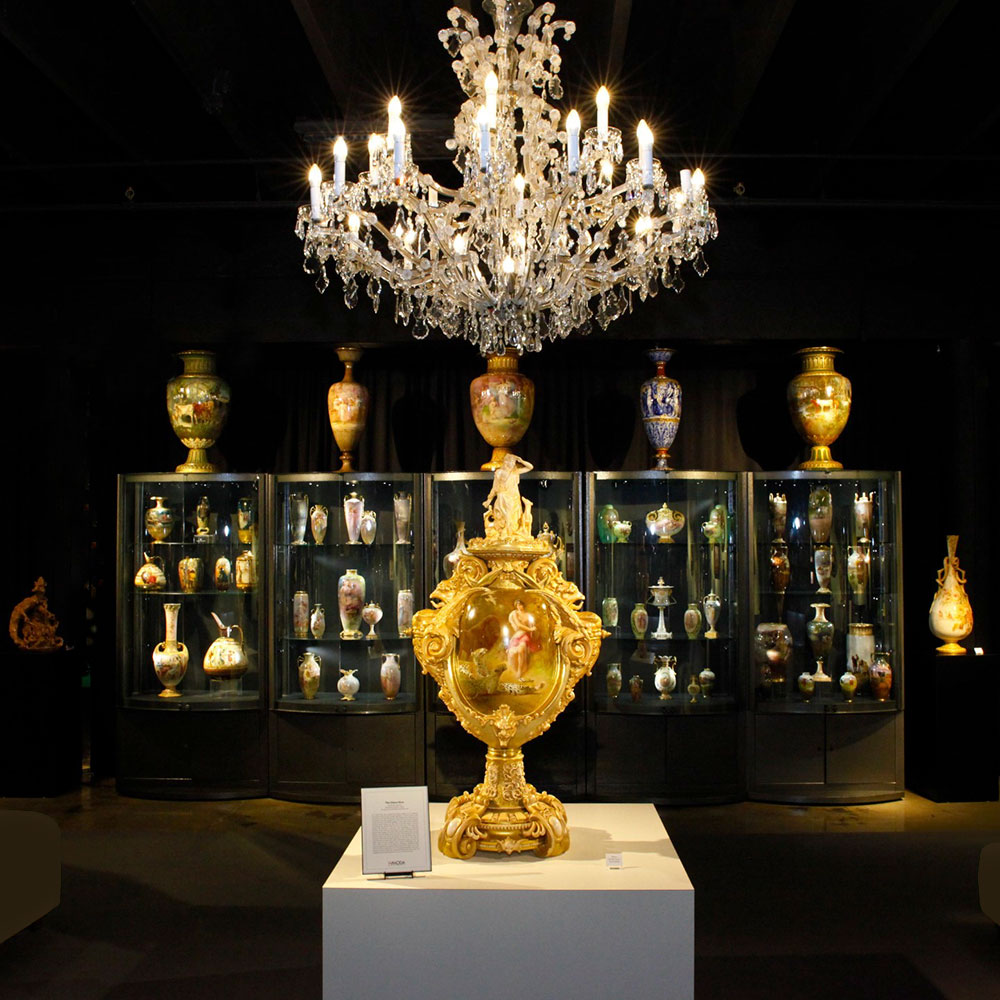
WMODA Doulton Gallery
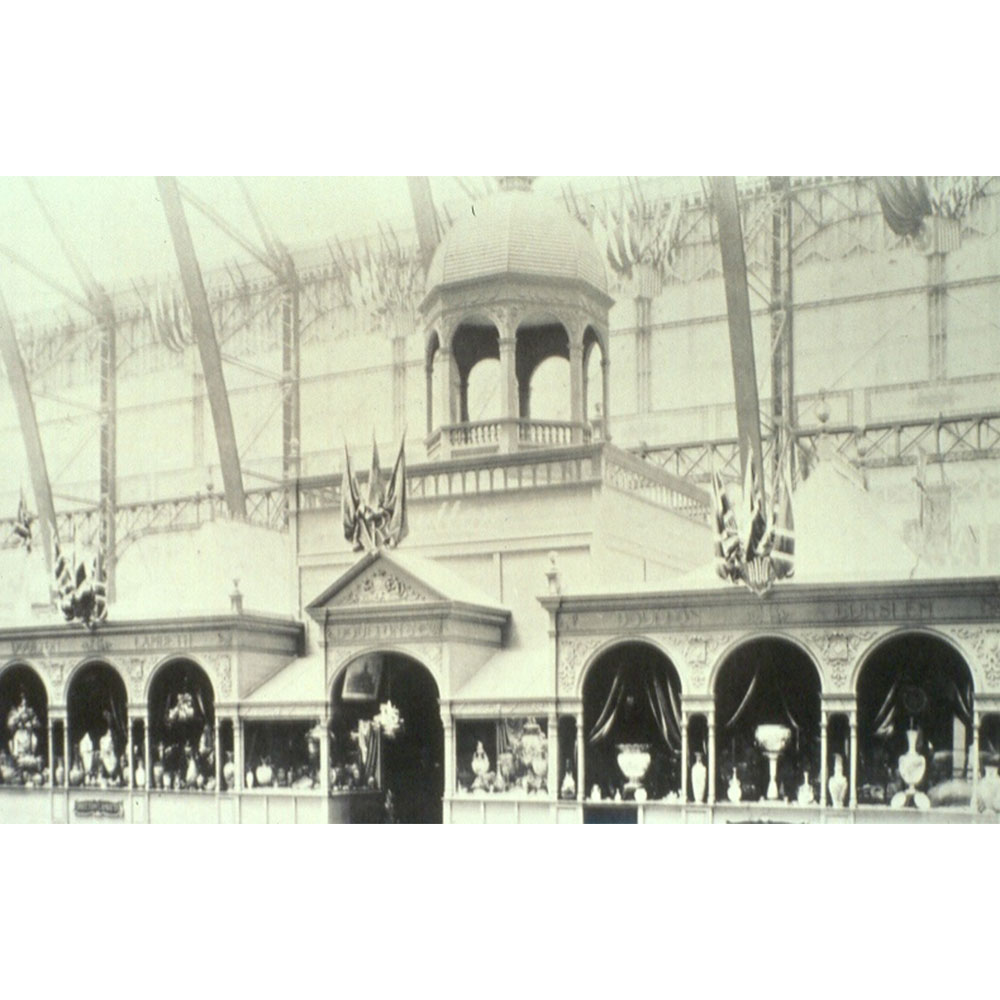
Chicago Exhibition Hall 1893
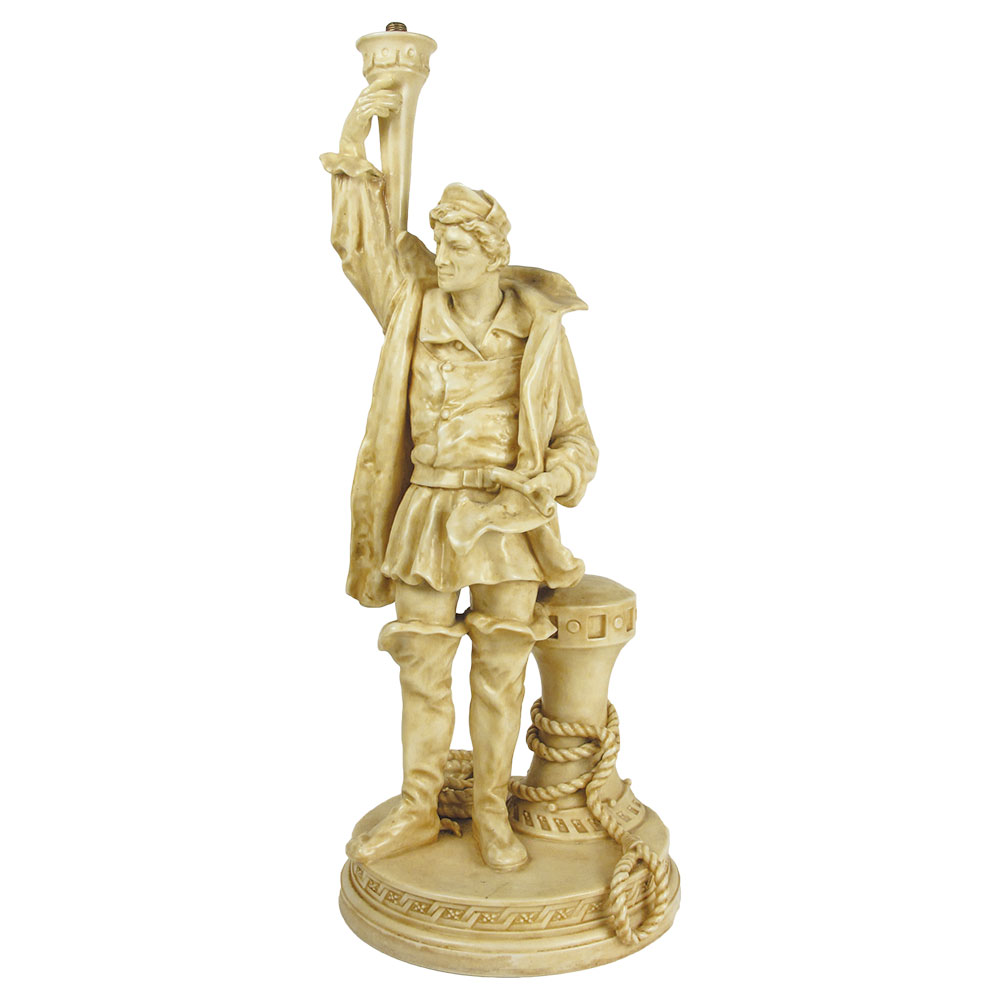
Christopher Columbus
by C.J. Noke
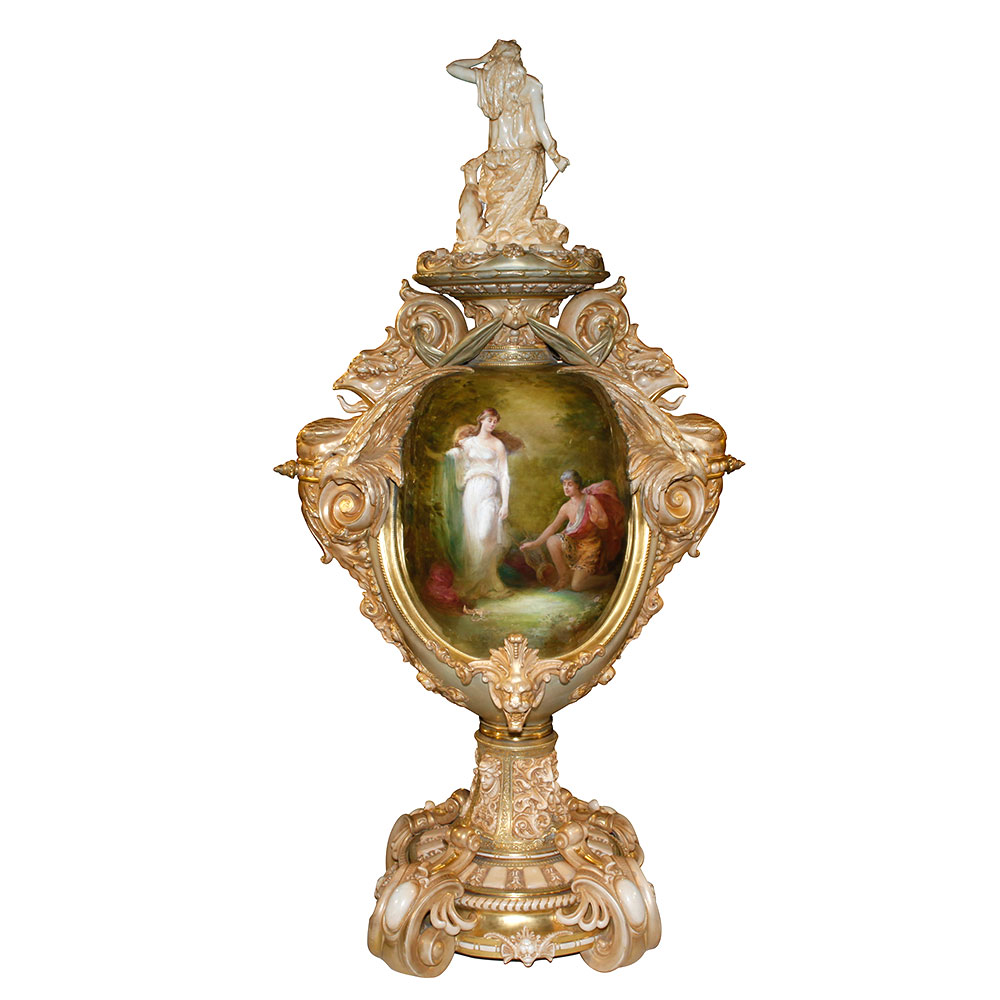
Diana Vase (back)
by C.J. Noke, F. Hancock & G. White 1900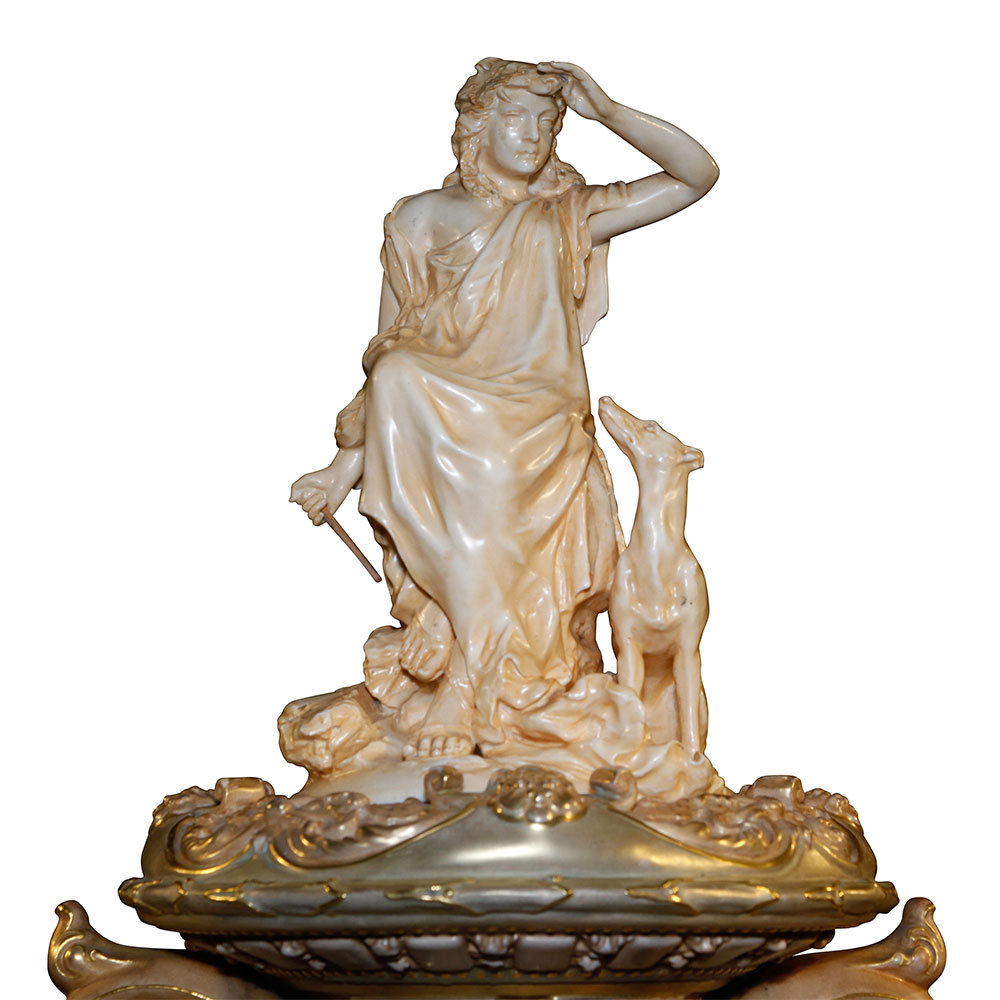
Diana Vase finial
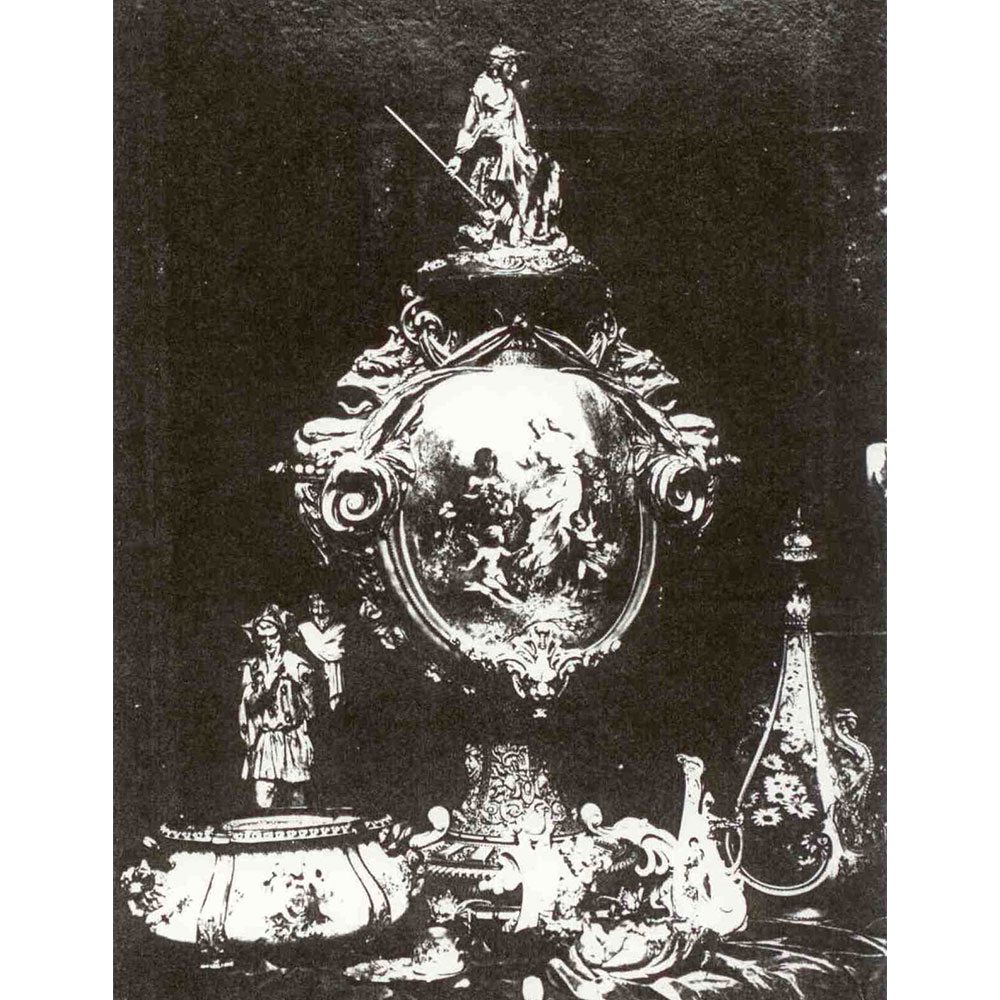
Diana Vase
Photograph of 1893 showing exhibits at the Chicago exhibition, including the Diana Vase.
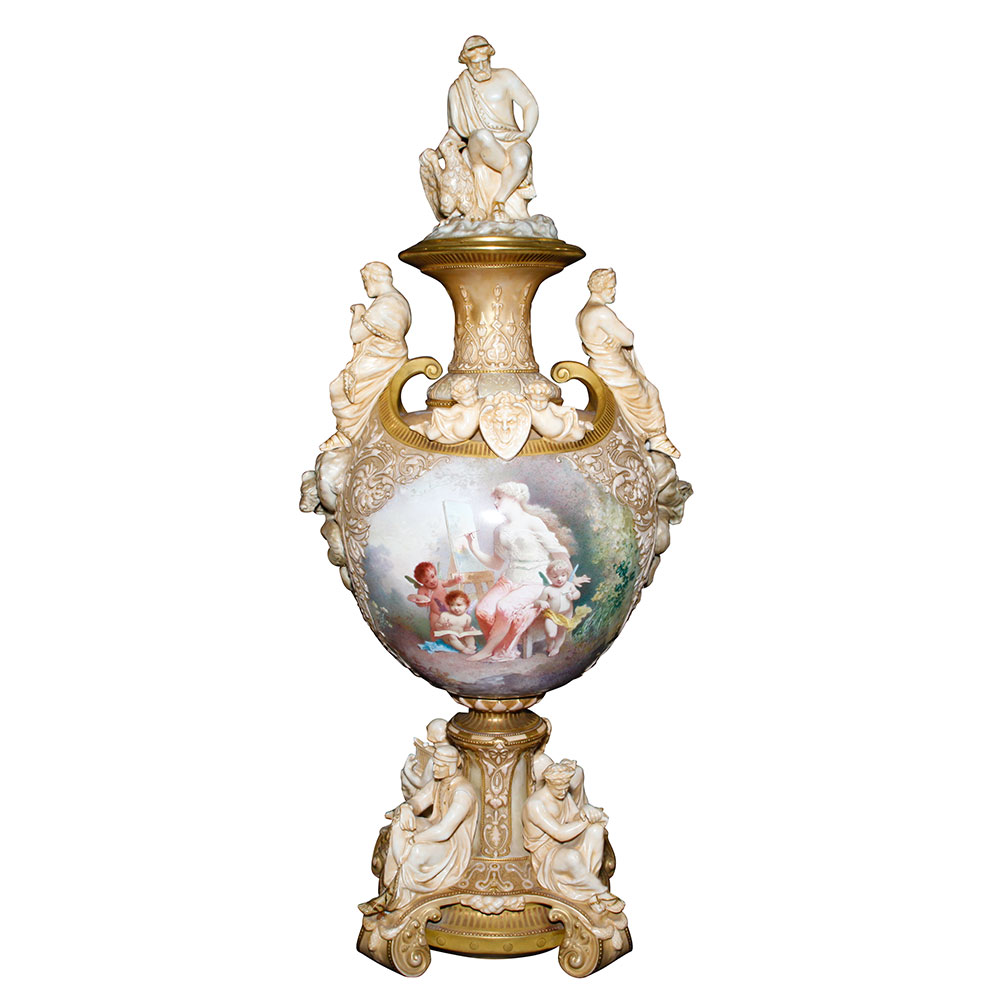
Dante Vase
by C.J. Noke & C. Labarre 1893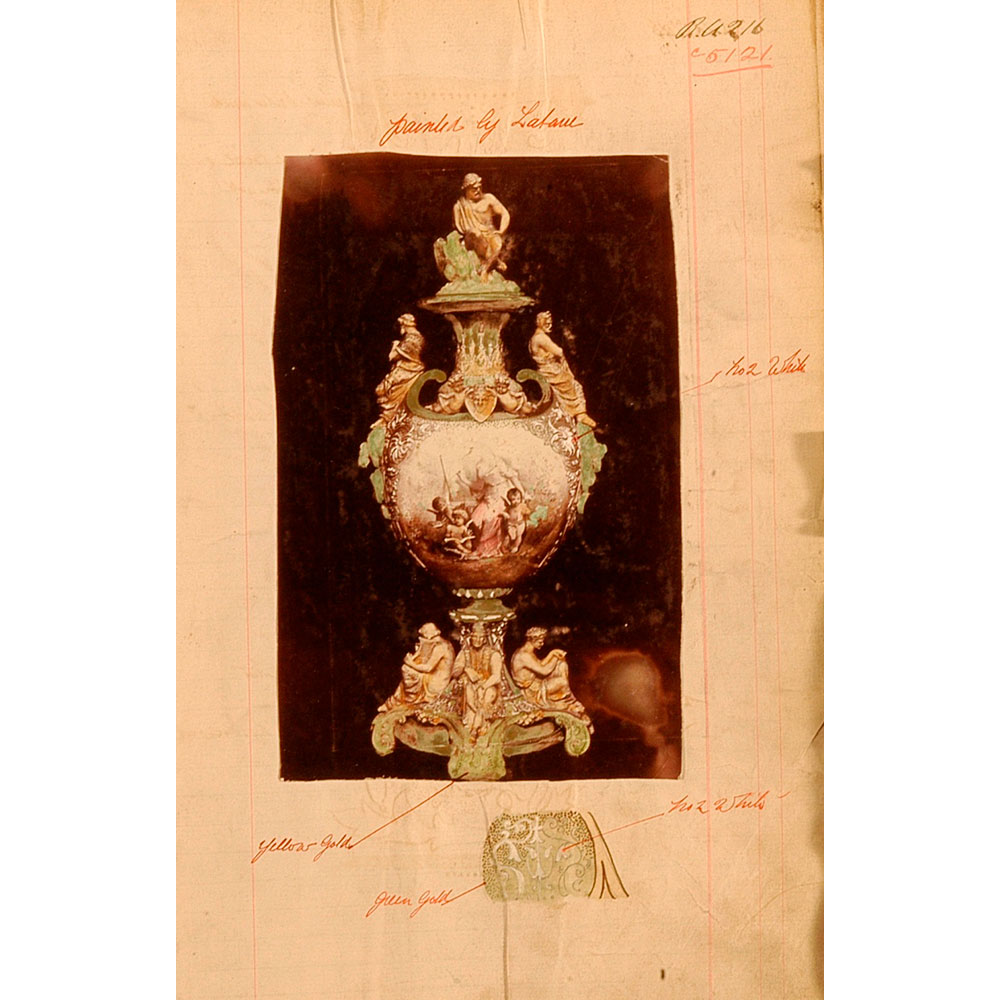
Dante Vase in Doulton Pattern Book
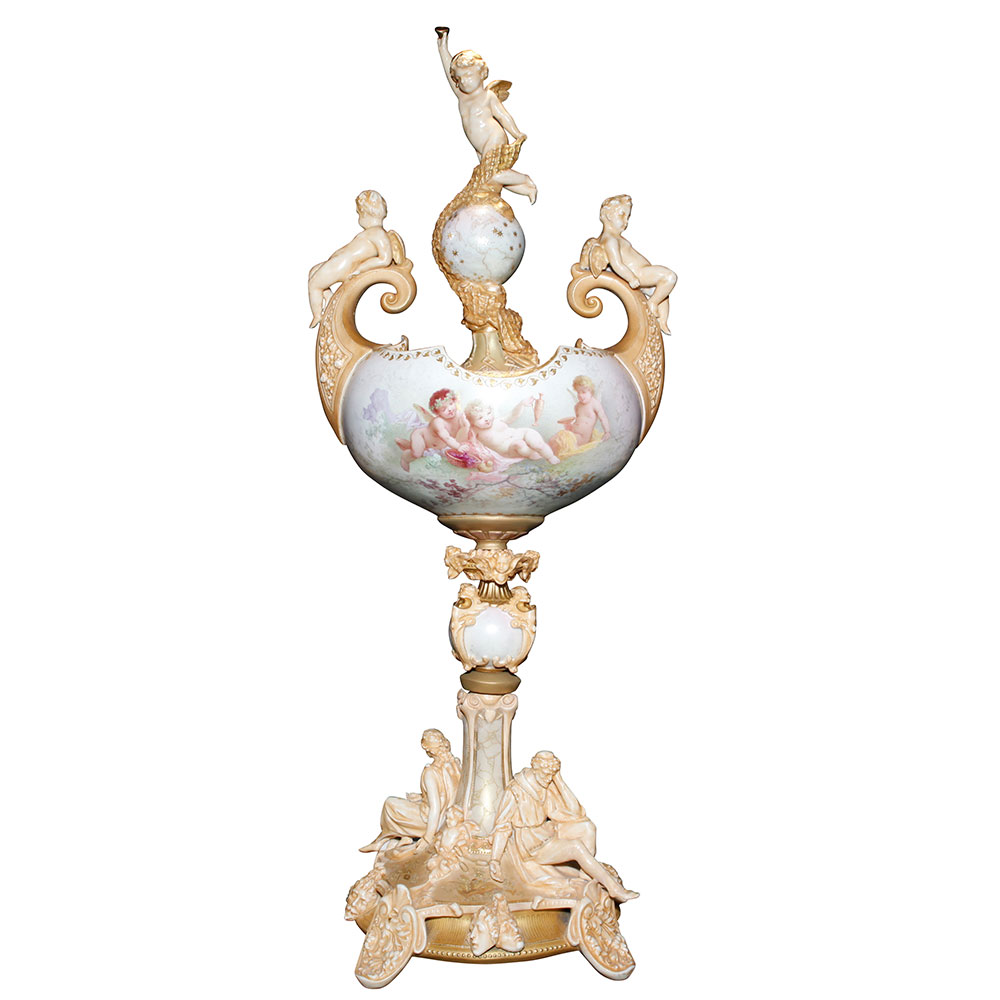
Love Vase
by C.J. Noke & C. Labarre 1893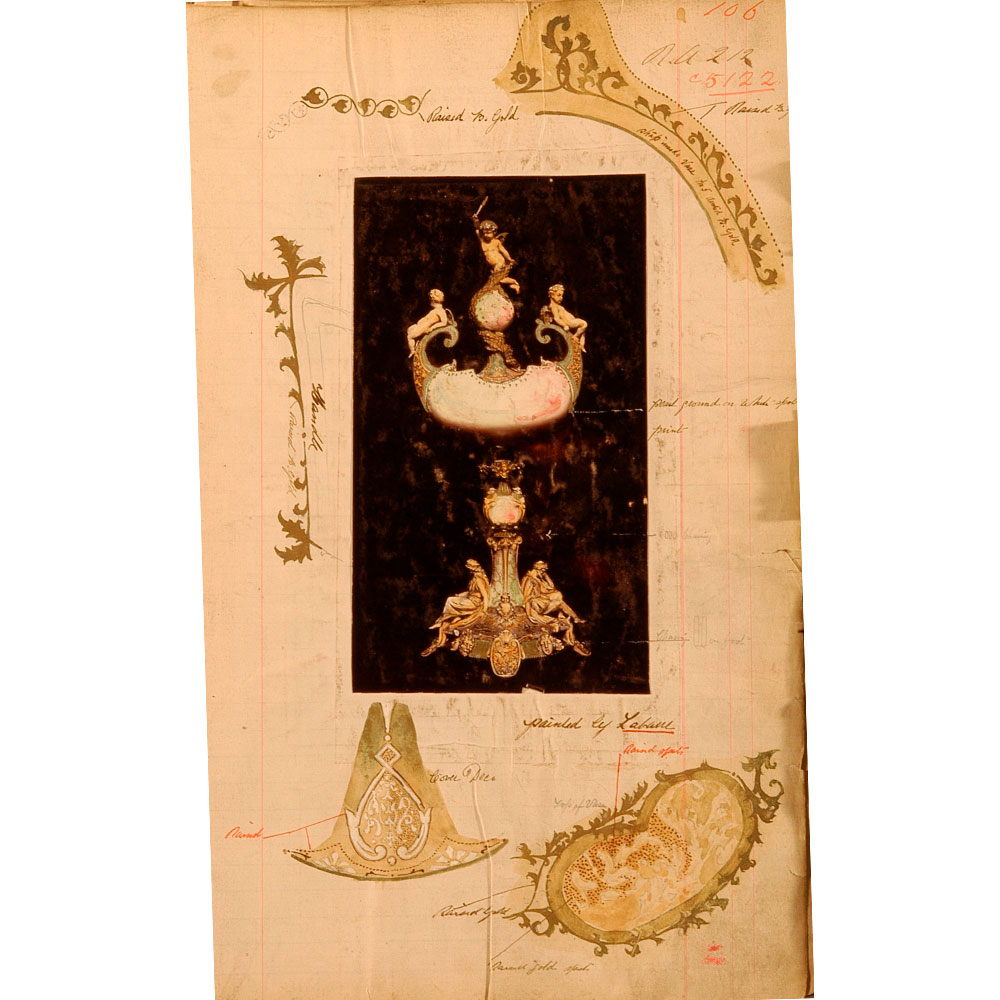
Love Vase in Doulton Pattern Book
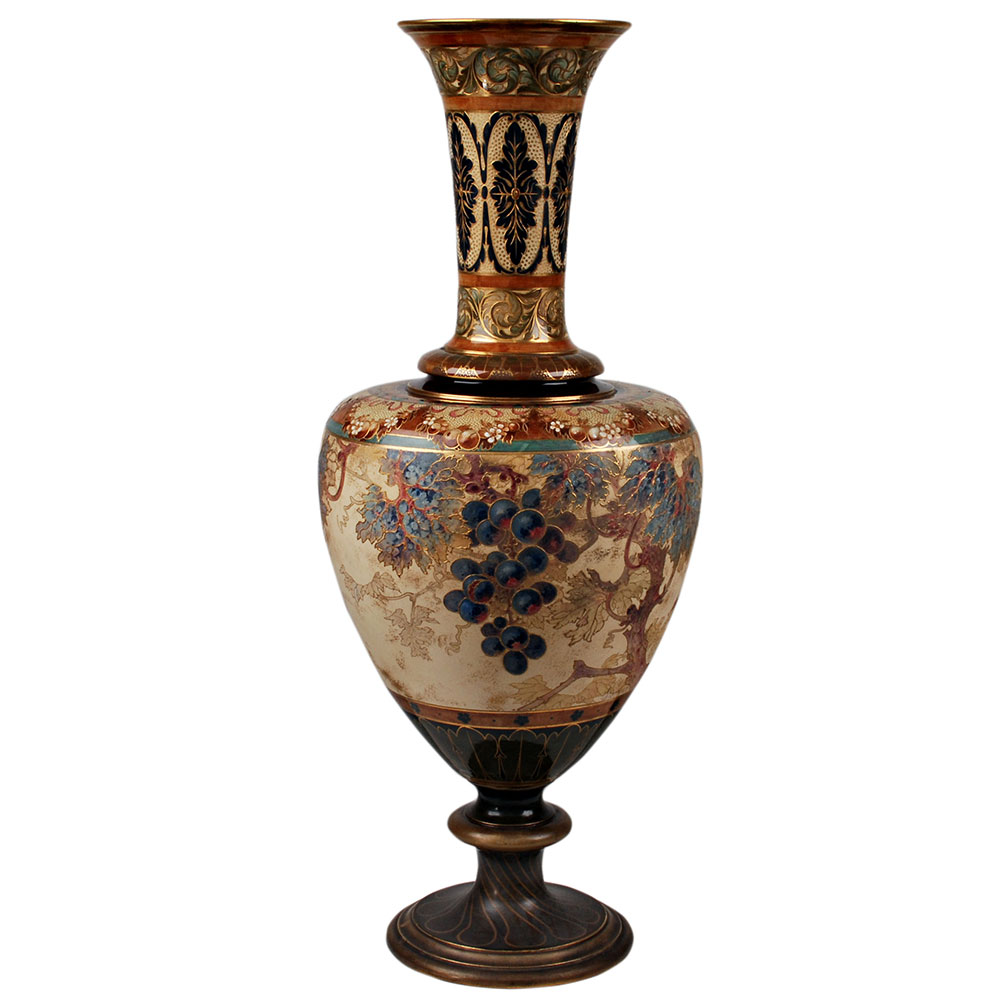
Spanish Ware Vase
by S. Wilson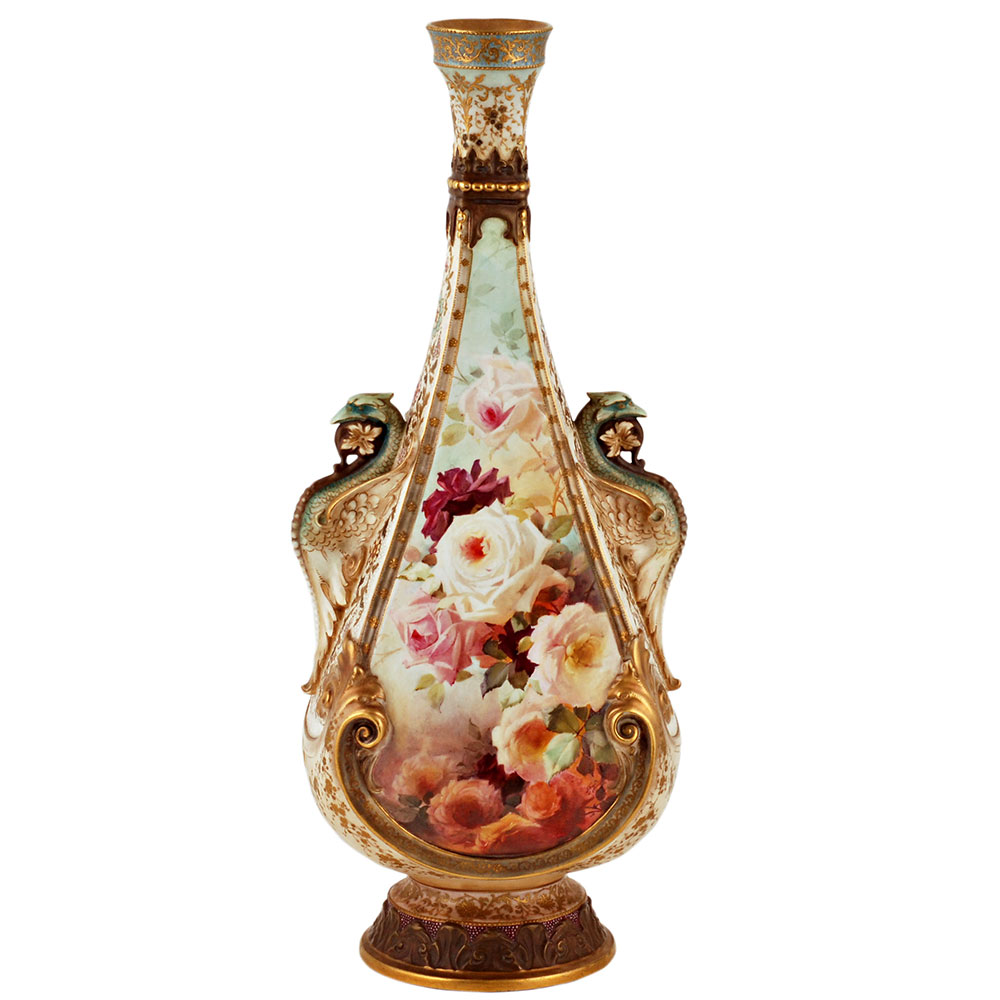
Roses Vase
by C.J. Noke & F. Hancock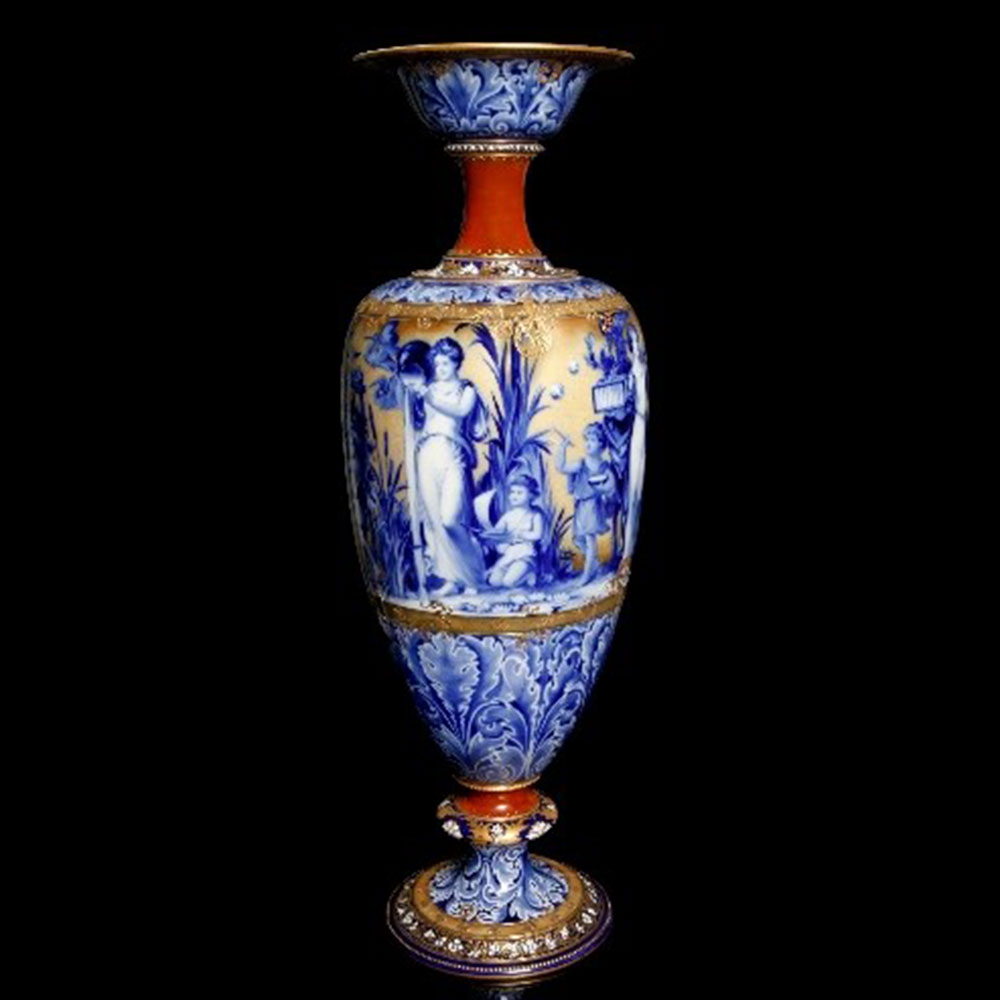
Flow Blue Vase
by G. White 1893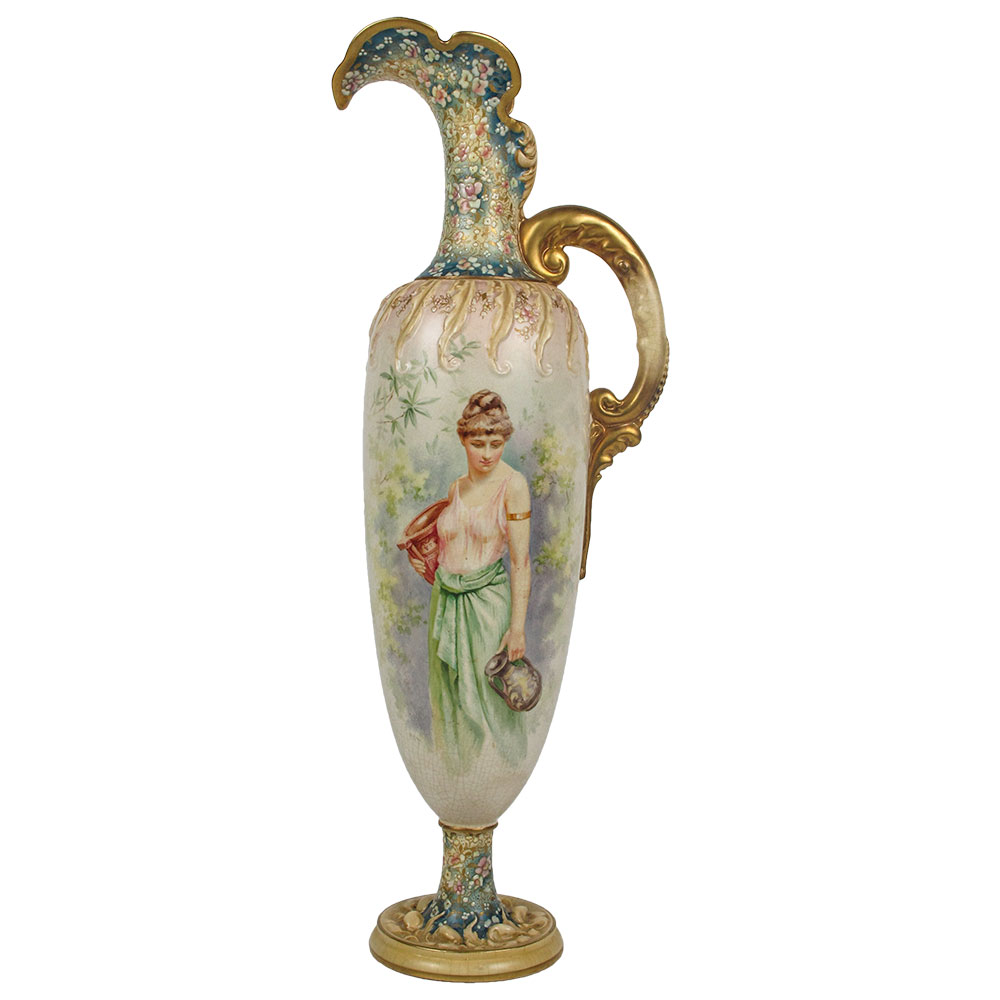
Chicago Exhibition Ewer
by C.J. Noke & G. White 1893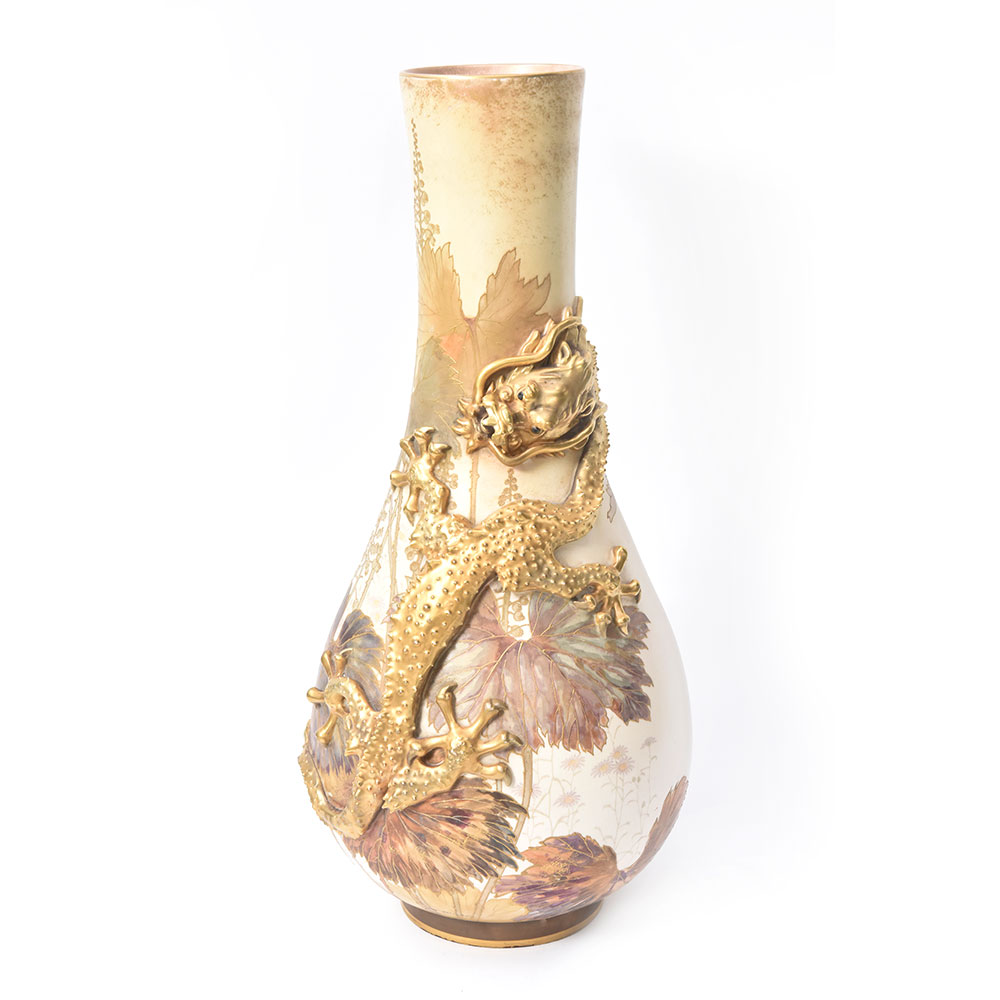
Dragon Vase
by C.J. Noke & S. Wilson 1893
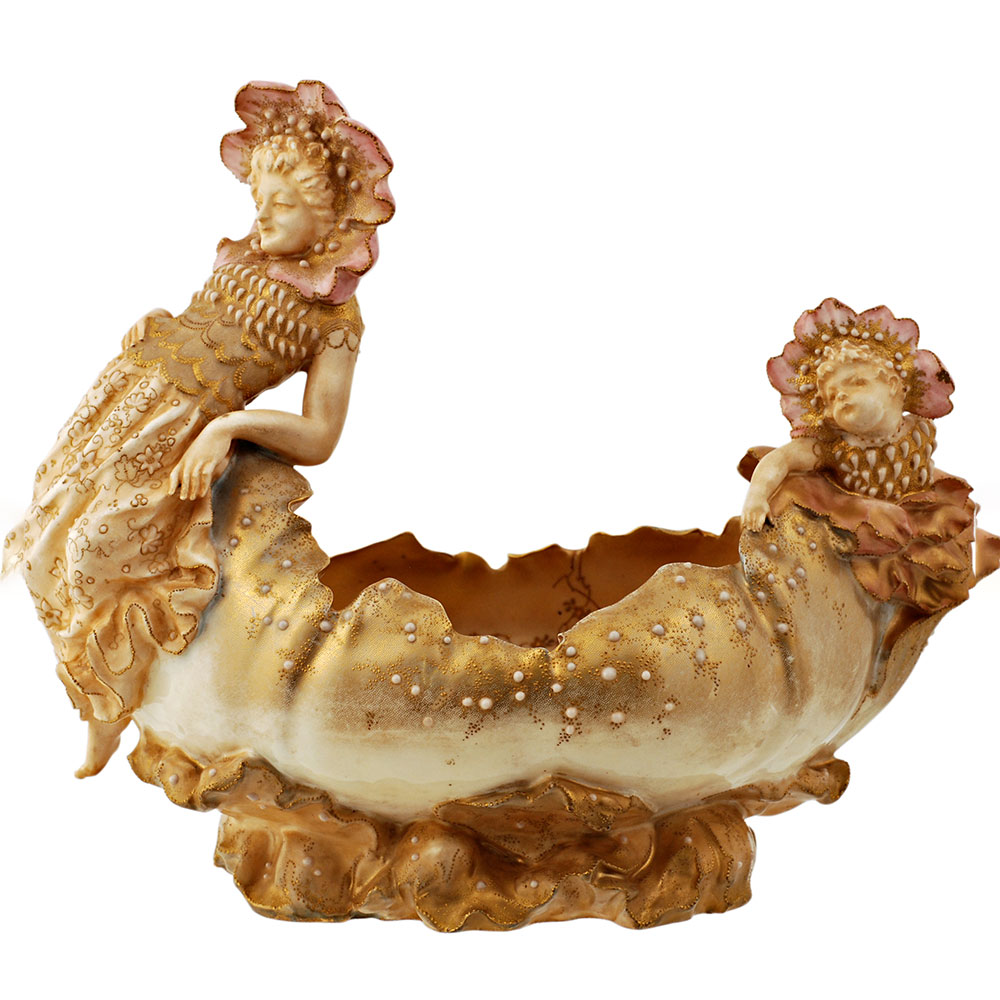
Flora's Feast
by C.J. Noke after W. Crane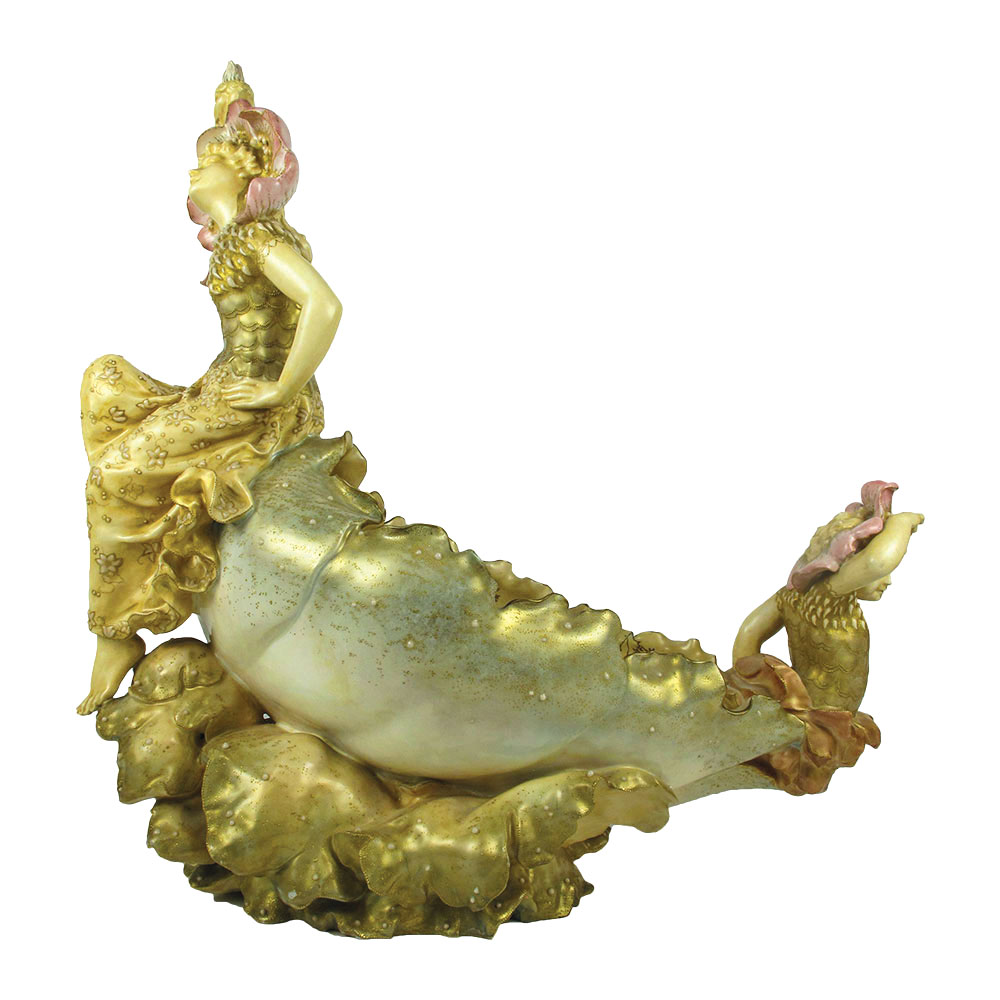
Flora's Feast
by C.J. Noke after W. Crane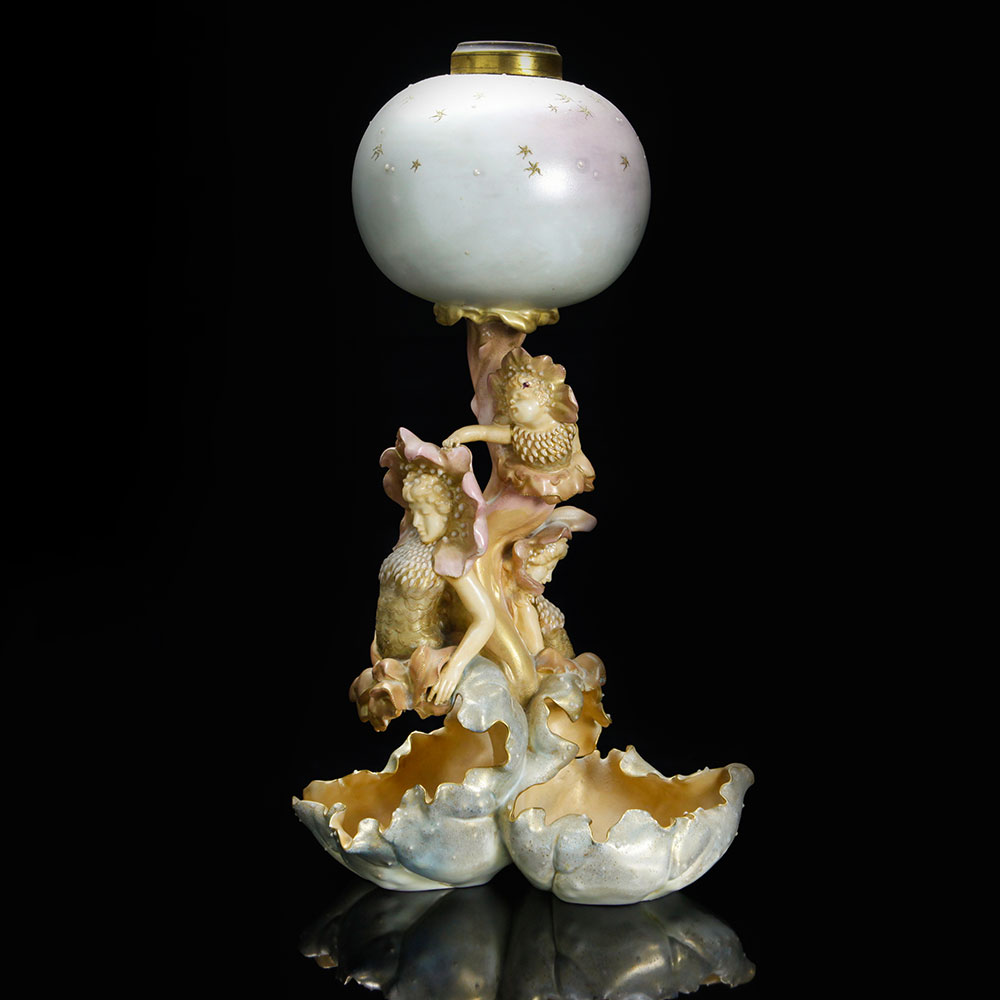
Flora's Feast Lamp
by C.J. Noke after W. Crane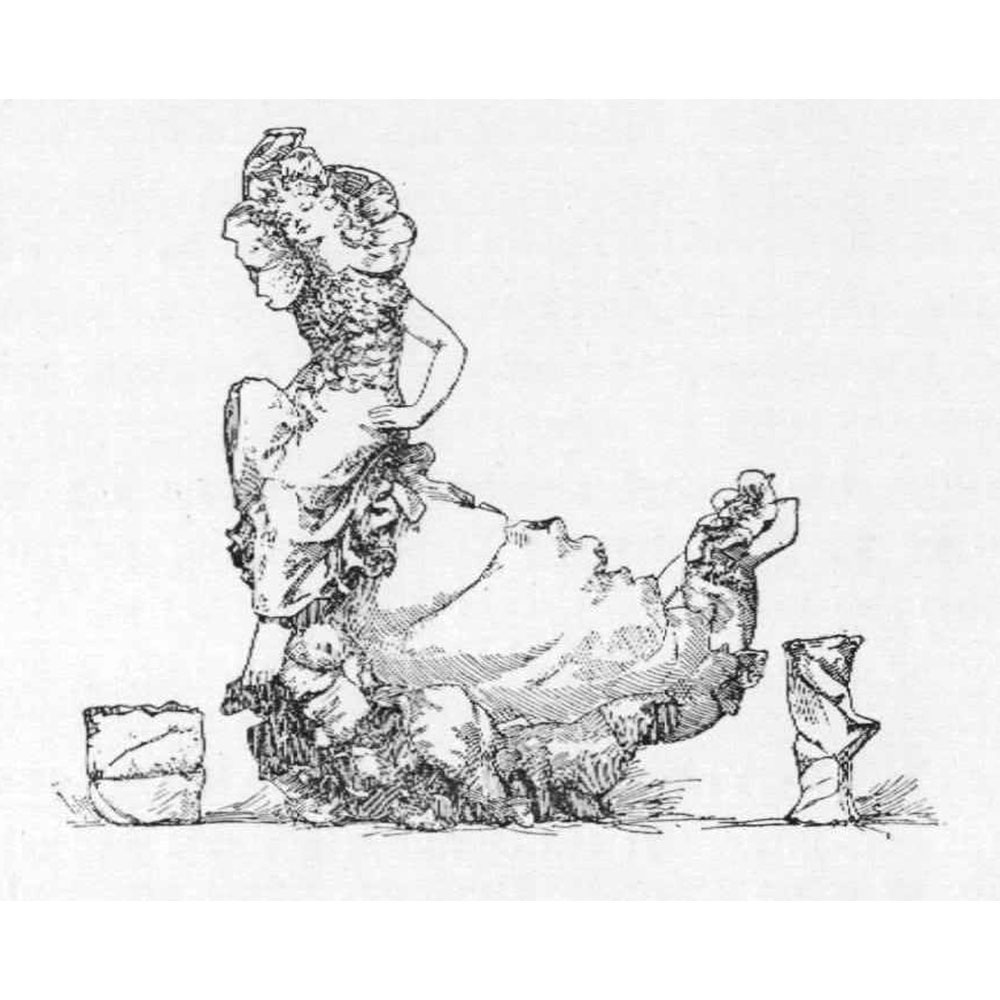
Flora's Feast Illustration
Chicago Exhibition Catalog 1893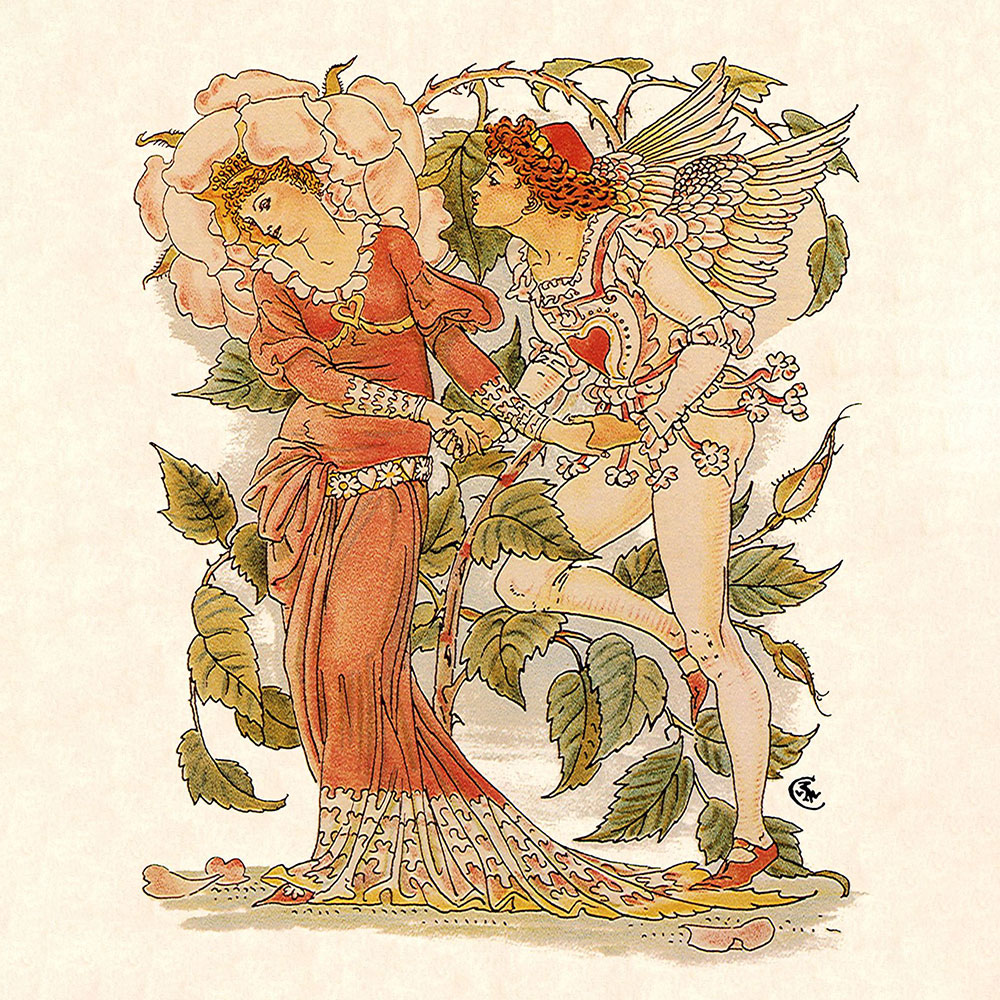
Cupid Rose Illustration
by W. Crane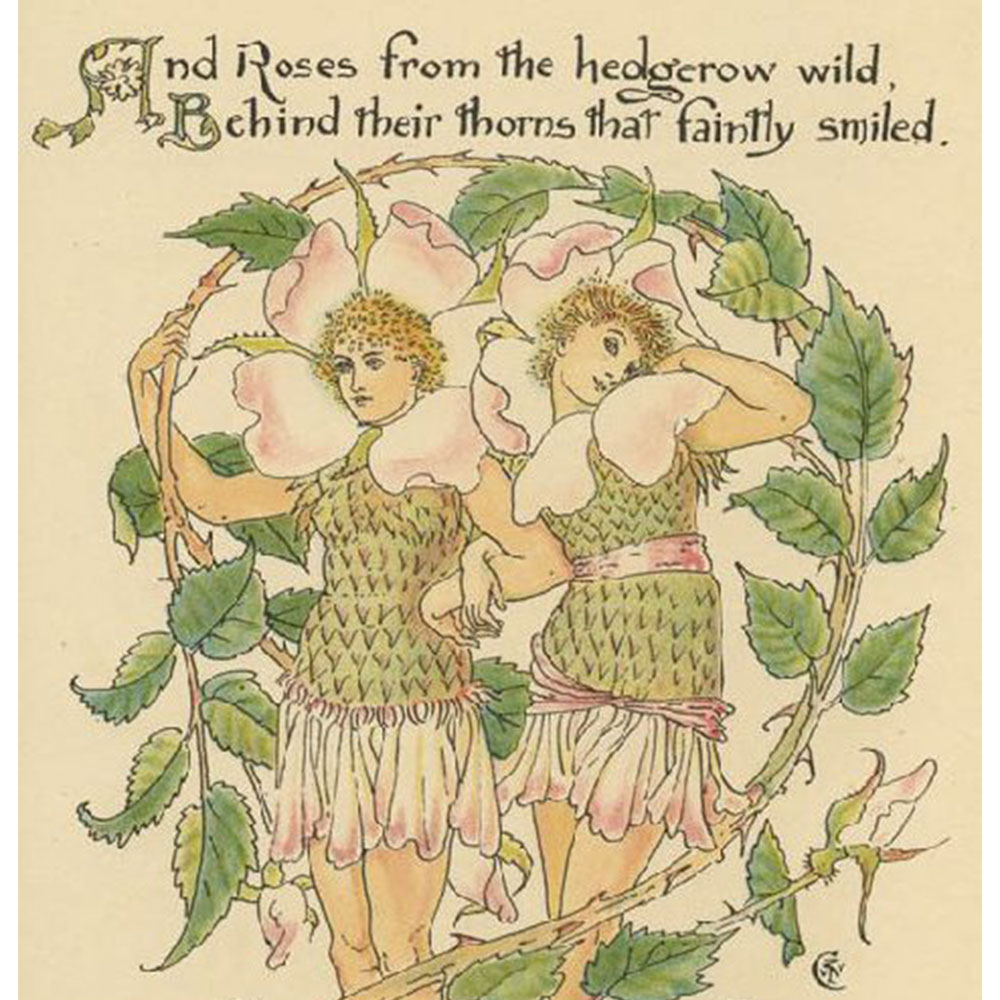
Rose Illustration
by W. Crane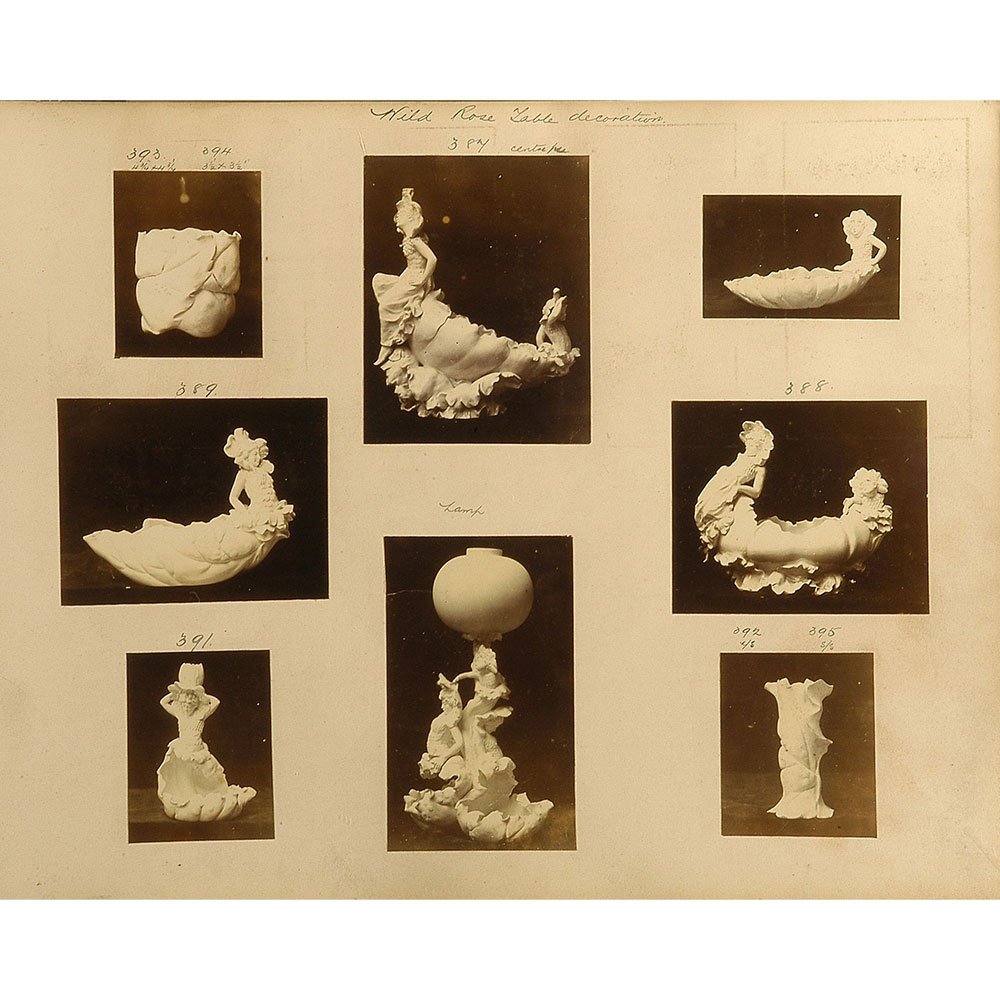
Flora's Feast Collection from Doulton Photo Album 1893
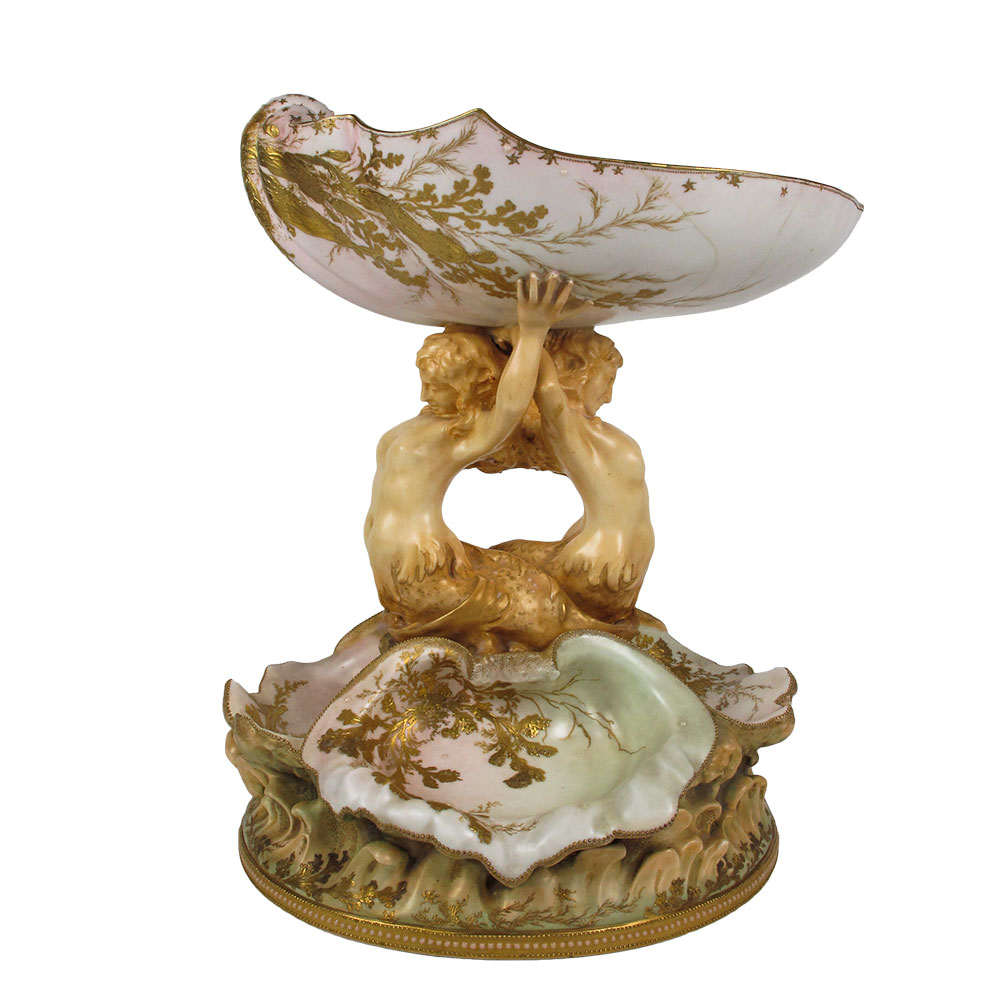
Mermaid Centerpiece
by C.J. Noke & W. Hodkinson 1893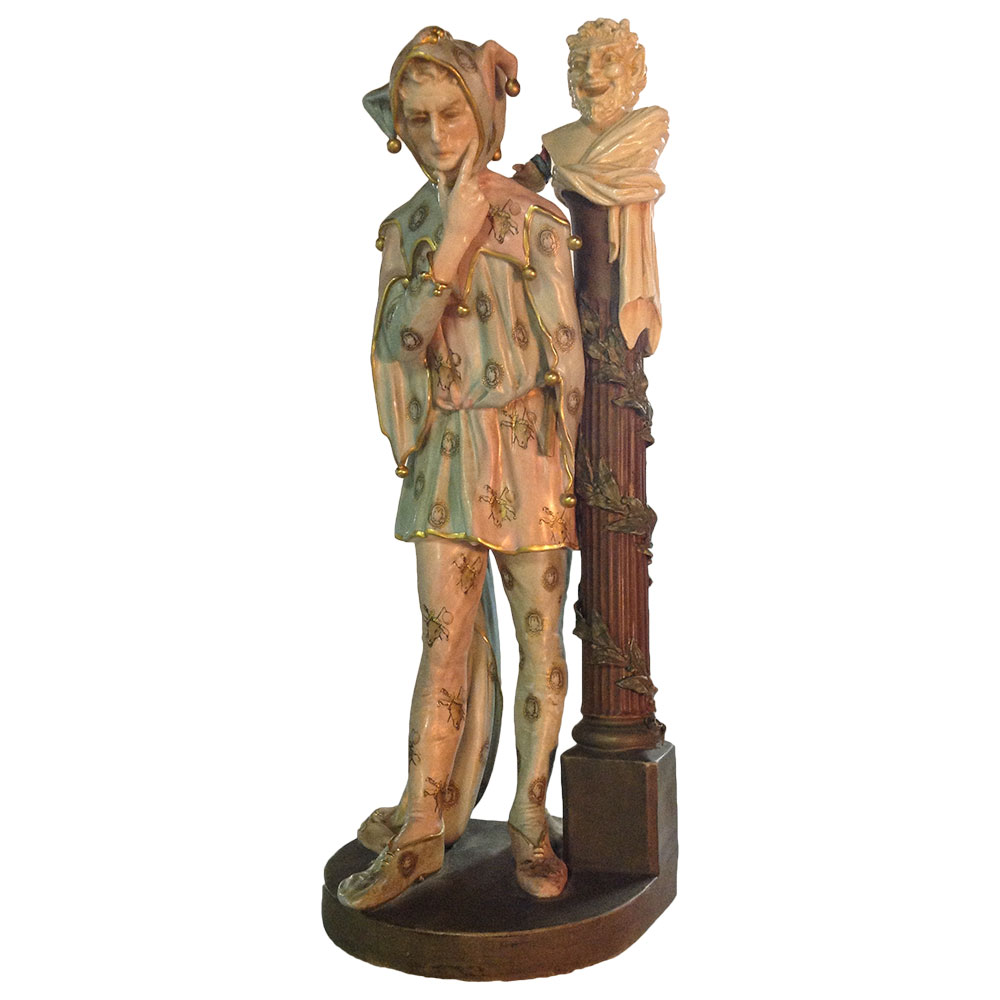
Mirth & Melancholy
by C.J. Noke 1893
